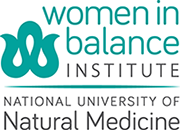Calcium Supplements and Breast Cancer
Since 1996, researchers the world over (Germany, France, Netherlands, Japan, Australia and the USA) have been writing about the correlation of high bone density and high rates of breast cancer. So before you jump on the more calcium bandwagon, read about this danger, about adding Vit K, and other relevant issues. Don’t risk breast cancer while chasing bone density levels whose rating scale, while an excellent measurement of compressive strength, does not reveal tensile strength, i.e. whether or not your bone will resist breaking from being pulled or stretched, as commonly occurs in a fall or similar trauma. More information
Update on The Women’s Health Initiative, October 20, 2010
New findings from the Women’s Health Initiative study published in the Journal of the American Medical Association (October 20, 2010) conclude that the use of synthetic hormone
replacement therapy (HRT) is associated with a more invasive and deadly form of breast cancer than previously reported.
The objective of the WHI follow-up was to determine the effects of therapy with HRT (synthetic estrogen plus progestin) on cumulative breast cancer incidence and mortality after a total mean follow-up of 11 years, through August 14, 2009. In the original study, a total of 16,608 postmenopausal women aged 50 to 79 years with no prior hysterectomy from 40 US clinical centers were randomly assigned to receive combined conjugated equine estrogens, 0.625 mg/d, plus medroxyprogesterone acetate (progestin), 2.5 mg/d, or placebo pill. The study had to be terminated three years early when researchers discovered increased risks of heart disease, stroke, blood clots and breast cancer. After the original trial completion date (March 31, 2005), re-consent was required for continued follow-up and was obtained from 12,788 (83%) of the surviving participants.
Conclusions: Estrogen plus progestin (synthetic) HRT was associated with greater breast cancer incidence, and the cancers are more commonly node-positive. Breast cancer mortality also appears to be increased with combined use of estrogen plus progestin.
Hormone Replacement Therapy and Breast Cancer Rates, April 2010
Recent trends in hormone therapy utilization show dramatic decline in breast cancer rates with drop in HRT use.
Recent declines in invasive breast cancer have been reported in the US, with many studies linking these declines to reductions in the use of combination estrogen/progestin hormone therapy (EPHT). Researchers evaluated the changing use of postmenopausal hormone therapy, mammography screening rates, and the decline in breast cancer incidence specifically for Marin County, California, a population with historically elevated breast cancer incidence rates.
Methods: The Marin Women’s Study (MWS) is a community-based, prospective cohort study launched in 2006 to monitor changes in breast cancer, breast density, and personal and biologic risk factors among women living in Marin County. The MWS enrolled 1,833 women following routine screening mammography between October 2006 and July 2007. Participants completed a self-administered questionnaire that included items regarding historical hormone therapy regimen (estrogen only, progesterone only, EPHT), age of first and last use, total years of use, and reason(s) for stopping, as well as information regarding complementary hormone use.
Results: Prevalence of EPHT use among non-Hispanic white women ages 50 and over declined sharply from 21.2% in 1998 to 6.7% by 2006-07. Estrogen only use declined from 26.9% in 1998 to 22.4% by 2006-07. Invasive breast cancer incidence rates declined 33.4% between 2001 and 2004, with drops most pronounced for Estrogen positive cancers. Screening mammography rates did not change during this period. Use of alternative or complementary agents did not differ significantly between ever and never hormone users. Of women who reported stopping EPHT in the past 5 years, 60% cited “health risks” or “news reports” as their primary reasons for quitting.
Conclusion: A dramatic reduction in use of HRT was followed by a significant reduction in invasive and estrogen+ breast cancer rates among women living in Marin County, California.

